#PS1 Games on Android
Explore tagged Tumblr posts
Text
20th Century Handheld Horror
youtube

Epoch
Tokyo toy company, Epoch, has some interesting contributions to video games. From their 1-game-built-in home console, Electrotennis, in 1975 with the controls on the wireless console itself, to, their 1984 Game Pocket Computer’s ability to play it’s locally stored built-in games on top of being a handheld with separate swap-able games. I also always liked that it has a little window so you can see inserted cartridges’ label art. In 1981, they’d offer us MONSTER PANIC! A 1-game-built-in handheld where you’re awarded for every accession of 3 floors of iconic monsters from Donkey Kong-ing a mummy to sword fighting a skeleton. On the first floor is Frankenstein’s monster alongside Dracula and the following year they would release Dracula House, a more complex 1-game-built-in handheld where you are to break into a vampire nest and try to sneak up to their caskets to rob them without being caught! You’ll even have to worry about locked doors!

Bandai’s Solar Games
Bandai are always the first I think of when thinking of early 80s handhelds. They advertised solar power for their 1-game-built-in handhelds, and they had some sleek clamshell designs. In Frankenstein, you play as him, scrambling around the lab before needing to deal with your monster out in the world, as their handhelds could have multiple scenes! They have Invaders of the Mummy’s Tomb, where you fight your way through the desert into a tomb to be faced with those rising mummies who might spook you but not away from a little tomb raiding. You have 謎の沈没, which I’d translate as Mystery of the Sunken Ship, where you dive into shark-infested waters with a speargun and face a horde of sharks darting at you before making it into the sunken ship to see what lies within. Spoiler alert, it’s the rising dead! 1982 would also bring the world 悪霊の館, usually translated as Terror House, which is the Bandai handheld I see brought up the most to this day. I think it’s all in the branding too. Truly, it’s just Bandai’s Monster Panic but with 2 scenes. (1 inside the house and 1 outside, approaching the house) The opening of its commercial, however, is what burned Bandai into my head as the face of early 80s handhelds, with a man clad in scarlet red slowly looking up to present the game to you before growing scared himself as he tries to keep calm the Grim Reaper behind the camera, casting his distinct, menacing shadow with his arm and scythe raised as they are in-game. Instead of 3 floors, there is 2 with the Grim Reaper and Frankenstein's monster on the first and Dracula on the second.

Digi Casse
When Epoch released the Game Pocket Computer with its separate, swappable games, Bandai dropped the Digi Casse (as in Digital Cassette). This runs on those round, silver, watch-style batteries. When I first saw the Milton Bradley Microvision, I initially questioned if the window on the massive cartridges that covers the front of the device was the game screen, and that’s the case with the Digi Casse, where the screen is built into the cartridges that take up the top half of the device. Now I want you to imagine how horrifying Mount Fuji erupting would be. Now what if monsters were erupting out? That’s what you’ll face in 富士山大爆発, which you can translate as Mount Fuji eruption/explosion! Picture Space Panic, but instead of digging holes for the aliens to fall into, you want to be on the platform above them and shovel dirt on top of them, though if they jump up at you, you can hit them with your shovel!

Game & Watch
You know, I’ve always been surprised video games built into wrist watches didn’t take off. I’d expect that to have the always-on-you convenience of phone games today but I’ll admit my vision of them being games like Break-Out played on a rotating bezel, vortex style or maybe just sim card sized game cards to buy addition games is an expensive feat of engineering to risk. Instead the word “watch” turned out better for Nintendo’s Game Boy Micro/DS shaped Game & Watches. Now I never considered horror game & watches and yet I found people adding some to horror lists and I realized that I was only blind-sighted by this because I’m in the minority who aren’t absolutely terrified of sharks! I didn’t realize how many people don’t even go the ocean at the beach because they’re nervously thinking about shark attacks. It reminds me of people with Thalassophobia that can’t handle boat rides. In finding worlds to transport themselves to in video games, they would see games like Life Boat or Parachute where you’re rescuing people from shark infested waters as a horror scenario to imagine yourself in!

Game Boy Nintendo’s been in the commercial video game business since before Pong! They had a part in what might be the earliest known example of purchasable games for your home console with Shooting Gallery for the Magnavox Odyssey. I guess that makes it poetic that that would make them the ones to finally break through a handheld supporting swappable games into mass popularity with the Game Boy! Its games often mirrored the game design of their third-generation console, which was the most popular home PC of its time. As a matter of fact, it shared a portion of its horror library, like Swamp Thing, Kid Dracula, Gremlins 2, Alien 3, and Bram Stoker’s Dracula. It even got ports from elsewhere that the famous NES never seemed to get, like Bubble Ghost, Godzilla(kun), and the infamous case where Kemco cloned the Amiga game P. P. Hammer and his Pneumatic Weapon as Mickey Mouse IV: 魔法のラビリンス (The Labyrinth of Magic), bringing it to Europe as Garfield: Labyrinth, and then bringing it to the United States as The Real Ghostbusters. As you might suspect, this results in the region’s IPs being unfitting skins over Pneaumatic Weapon like using your proton pack to dig up things in the ground. Thankfully the Game Boy already had HAL Laboratory’s Ghostbusters 2. A great adaptation that’s an example of a handheld game getting a home console sequel.
Another being the Ghost and Goblins spin-off Gargoyle’s Quest which I often see compared to Dragon Quest but I might compare it more to Zelda 2 where you have top-down world to explore with towns and people to talk to while combat takes you to real-time side-scrolling with the verticality you’d expect of Ghosts ‘n Goblins and you are winged gargoyle after all. You’d think the simple quick games would dominate the handheld form factor but it seemed to be a mix with these larger games packed with text boxes and save systems. The Game Boy of course is the birth place of the highest grossing media franchise in humanity’s history, Pokemon, which itself loves to use horror from the Lumiose City ghost girl to the first game’s death themed dungeon being in Lavender Town that’s gained QUITE the sizable fanbase as a horror location, inspiring much! On a side note, I always found it funny that people express how scary they find the error messages in the Game Boy’s camera app to be. If you do things like try to start a slideshow with no pictures selected or try to run from a battle with no enemies too much, you may get an error message like “Who are you running from?” accompanied by one of 3 pictures of people with things drawn over them. I can see how an unexpected picture of a strange man in low resolution monochrome, drawn over can be creepy and with the accompanying long sound that plays, I can’t tell if it’s unintentional. It has that “Please insert a PlayStation or PlayStation 2 format disc” error message energy. It borders that “fun is infinite” from Sonic CD energy… and I love that! If you’re in charge of software, make the error messages as scary as possible! I love hearing what makes people scared in games. It can be the silliest thing sometimes.

Dracula: The Undead- 1991 – Lynx While Nintendo would dominate the market with the Game Boy, the power-hungry still had the option to pay more than twice as much to sacrifice that portability for more horsepower! Also releasing in 1989, the Atari Lynx offered color, 16-bit games, but, for horror fans, Dracula: The Undead wouldn't need all those colors. With fixed camera angles, it uses those color capabilities to mimic the look of a sepia-toned film from the time of Bram Stoker’s 1897 novel, which this game has him read to you. You take on the role of Jonathan Harker trying to survive this classic horror. Probably to avoid hitting you with too much exposition and lack of gameplay, you could see Bram doesn’t read through the first few pages and seems to rush through and summarize, which makes me feel they missed out on the mood setting and mystery of those scenes.

The Alien Syndrome Trilogy Competitors are always around every corner in the handheld market, and in 1990, Sega aimed to compete with the Game Boy, using the strength they held over Nintendo in that home market (being that they had a fourth-generation console out for years and Nintendo still hadn’t.) The Sega Game Gear had some interesting exclusives, like a sequel to 1987’s Alien Syndrome. The original arcade game saw Ricky and Marry rescuing comrades from a horrifying infestation. The Game Gear sequel, set and released 5 years later, sees a space transport send out a mayday as they’re faced with an unknown creature, plunging Ricky and Marry back into action against this universe’s unsung monster designs. The variety of enemies can really capture the feeling of walking through the hallways, on edge at what you’re going to see next. In 2007, there would even be a third game taking place 100 years later, seeing Aileen Harding enter a ship fallen to the syndrome! Keeping true to the previous games, it’s also a rescue mission, but now you get to see some of these designs in polygons!

PC Engine GT/Turbo Express The NEC PC Engine is known as starting the fourth generation but what I always think of them for is having a handheld that took their current premium console’s physical games! Being able to pull your game out of your console and put it in you handheld means you may already have a library! Now that’s a true companion! While the game cards the home system used included games like Samurai-Ghost and Devil’s Crush but quite a few notable titles like Horror Story, Godzilla: Battle Legends and even the fun them Them parody, it came from the desert, are for the CD attachment… I guess you could attach that too the GT since it doubles as a portable TV but how handheld is that really? Without all that, the PC Engine is still farther than I’ve ever seen a 20th century handheld take things. I know the Sega Nomad took Genesis games, by the time it came out, Genesis was Sega’s last gen offerings. With the Game Boy Pocket soon shrinking the Game Boy even more, it really highlighted how the competition was like trying carry around a 1970’s cellphone and their 3 hour battery life was not so acceptable in a time where most people were buying disposable batteries every time they ran out of juice. Things like the GT, Game Gear, and Lynx are novel but niche because they went too far in the power direction while others like the Gamate and Supervision felt a almost a generation behind the sweet spot that was the bar that Nintendo’s Family Computer raised games to.

Virtual Boy You’d think VR and horror games would be a match made in heaven, and yet, despite VR being around since at least the 60s, there’s not a lot of 20th-century examples. Over those decades of refinement, VR had become so approachable that Nintendo saw an opportunity to make their cheap portable headset, but that fatal flaw of being too scared to ship with a head strap seemed to deflate its entire library, making you constantly crane your neck into its desk stand. To this day, you need to buy third-party headstraps for Switch VR to cut down on the number of people walking down the stairs while playing BOTW, and unlike modern Nintendo VR that has head tracking, Virtual Boy decided that without a headstrap, they’d just cut it. All of that being said, Virtual Boy might be the most well-known VR device of the 20th century, one of the most well-known VR devices in history, and if you could only pick one color for a game to have, red would be the stereotypical one for horror.

Insmouse – 1995 Oct 13 – Virtual Boy Insmouse is an FPS survival horror game taking place in 1922 Massachusetts. You play as a detective offered an incredible payday if you find a book in the infamous forest locals are too scared to go near. Once you find this book, however, you realize what this is all about. It’s the Necronomicon, and the curiosity was irresistible! You just had to crack open the book to just get a peek…and with that… you are on quite the horror adventure to hopefully get to one of the game’s multiple endings. You have a limited amount of time to make it out of time-sensitive sections of the mansion full of Lovecraft-inspired horrors!

Tiger Electronics Now the Virtual Boy was not as relatively cheap as buying an attachment for your phone in 2014. You could buy 3 Game Boys for the price of it, but having gained a reputation as the cheap alternative to even Nintendo is Tiger Electronics. They’re probably best known for their 1-game-built-in handhelds but did have ones with swappable games like the Quiz Wiz, testing your knowledge with Monster Mania, or the R-Zone that really exudes Tiger’s reputation. You could pay $180 for Nintendo’s portable VR or $30 for Tiger Electronic’s 1-eyed AR games (with headstrap) and enjoy perhaps sub-second console generation quality games like Area 51 reflected off a transparent lens. They did try to release a premium handheld console for $70 that had everything from a touchscreen and stylus to (wired) internet. Being called the Gamecom but spelled with a period between the “Game” and “com” to presumably promote the website functionality, it would be the home of an RE2 port often looked down on for its great compromises. The system seemed to not do well, being short-lived, with them quickly refining it to also be $30 by the end of the 90s. The 1990s are when smartphones started popping up as everything was becoming a PDA to replace daybooks, and I view the Gamecom as an example of that move to making everything an all-in-one PDAs.
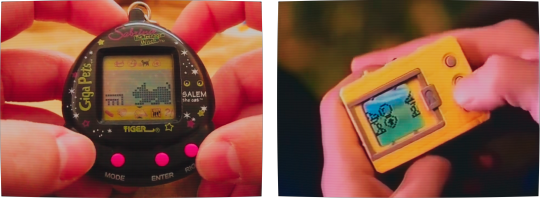
The Virtual Pet Craze In 1994, the MT-2000 phone launched and could play Tetris. You might imagine phone games like Nokia’s Hustle clone, Snake, in 1997 would begin to eat into people’s need to buy a separate handheld to play games, but even the simplest thing that’s fun can sell hardware. Perhaps it was better for them to not go big to compete as PDAs at the time and instead go tiny like keychains you don’t even need to put in your pocket. While people were playing their Tiger Electronics’ Giga Pets Salem the cat, Bandai, who had found much success with Tamagotchi, were trying to figure out how to get male players interested in this craze. Pokemon pulled it off the previous year, so Bandai would become their competitor with the Digital Monster. Raising and caring for collectible pets to battle each other, both Pocket and Digital monsters became the handheld equivalent of the pastime of children collecting bugs to battle each other. This tiny keychain form factor would continue from big companies.

Memory Handhelds 1998 would see Sega release the VMU (Visual Memory Unit) in July with a Digital Monster-like green Godzilla one. Its name, of course, being for its planned purpose of being a companion to Sega’s upcoming sixth-generation home console. It served as portable storage and a second screen experience that slotted right into controllers, like showing your health in Resident Evil games, and, being a dedicated handheld, some Dreamcast games even have companion VMU games where you can earn rewards to be transferred into the home game. PlayStation’s mascot, Toro Inoue, comes from their similar handheld, the PocketStation, released 6 months later. It's also a dedicated handheld, but instead of slotting into controllers, it slid into the memory card slot. You might be surprised what names supported it, from Megami Tensei to Digimon itself, bringing a multiplayer monster-battling Pokémon counterpart to PlayStation players. Both the VMU and PocketStation would be discontinued about 3 years after their release, and I’m surprised they seem so seldom looked back on compared to other handhelds of the 20th century. Maybe it’s their form factor running into the conundrum of making them as small as possible to be portable while still trying to make them large enough to be ergonomic to play while also thinking about how complex they want to make games on a keychain form factor, resulting in them undershooting complexity. I think this is where the PS Vita would one day misstep with its first-party library, but in the opposite direction by making games that seem more appropriate for the home console form factor than the handheld one. Still, I love the pure aesthetic of these handhelds!

Game Boy Color Between Sega and PlayStation’s handhelds, after nearly 10 years, the Game Boy would get a sequel in the Game Boy Color, featuring double the clock speed, 4 times the RAM, and backwards compatibility with… most Game Boy games… but it has an insane library of its own to sink your teeth into, though some games marked Game Boy Color would actually have an original Game Boy cartridge inside thanks to the backwards compatibility. To be clear, Game Boy Color games have clear cartridges and will specify they are for GBC only. There’s also the GBA that came out 3 years later and is backwards compatible with GB and GBC but seems to have its own hang-ups on what games it can’t play or plays poorly. Whether your favorite vampire hunter is Blade or Buffy, there’s a game for you. Whether you want a more serious fixed-camera survival horror, a Universal monster game, an Aliens, or… Smurfs Nightmare… there’s a game for you! Maybe you just want a new Ghostbusters, Addams Family, or Gremlins game for the new hardware. So many gems, but today I’m going for a mineral less valued.

Godzilla: The Series – 1999 – GBC Somehow it slipped my mind that the TriStar Godzilla got an animated series continuing the story, and I only recently learned that series got games like this! A slow-moving auto-runner with auto-generating health and block meters that squanders the fact that this is one of the most agile incarnations of Godzilla. The story is told through chatroom-looking text box exchanges with character portraits to set the stage of what episode you’re playing through, but I feel there had to be more exciting parts of the show to recreate and faster-paced gameplay. The variety of locations makes it feel fresh, but the slow pacing kills the overall game. I don’t know if a priced GBC game is the place for a less than hour and a half long auto-runner, but even within that genre, I think the 1988 Godzilla auto-runner everyone makes fun of is more fun because it’s faster!
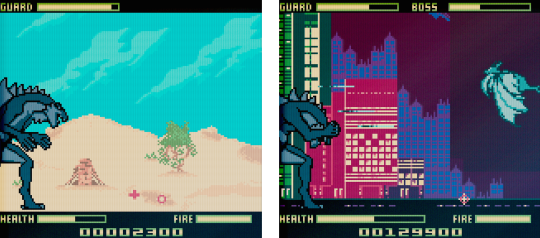
Godzilla: The Series: Monster Wars – 2000 – GBC First and foremost, this game is no longer an auto-scroller. You can’t go backwards, but having control over walking forward aids you with how health and block meters are no longer regenerating. You’ll need to target health and defense pickups with your breath that now has an on-screen cursor. These games make the game so much more interesting. Whereas there is little worry in the previous game as you slowly rampage forward, this makes the game a challenge to rise to and overcome. The difficulty can even complement the slower pacing as you inch forward, trying not to overwhelm yourself. This game also doesn’t have a footstep sound, which played constantly in the first game. I assume this is to reduce repetitiveness in the audio design, which I’ve heard some complain about. I’m also more interested in the giant monsters they have you face at the end of stages in this game, so while I’m not sure that I would agree with this being the gameplay to go with for a Godzilla game, it’s fascinating and commendable to see how they changed the gameplay of a game that I only see negative opinions of to try to improve it, even if most people don’t seem to like it in the end.

WonderSwan Mr. Game & Watch himself Gunpei Yokoi founded Koto Laboratory before his untimely passing, with perhaps his last work being on the WonderSwan, which is appropriately named, as I consider it the swan song of Bandai’s presence in big handheld gaming hardware. Whether you’re playing a port like Clocktower, fresh adaptations like Uzumaki got, or an original sequel like Ghosts ‘n Goblins received, the WonderSwan has a library that might pique your interest. You have visual novels like the Terrors games or, my favorite:

リング ∞ (Ring: Infinity) – 2000 – WonderSwan Yes, the series about a cursed tape that acts as a chain letter where, if you don’t get someone else to watch it, its subject, Sadako, will have you referred to in the past tense. Ring: Infinity is about the culture of trading VHS tapes at school, which is such a great setting for The Ring! Think of the skepticism and daringness of teenagers, on top of the fact that you were often trading VHS tapes that weren’t labeled! The setting combined with the writing is such a great mix of hanging out with friends in a nostalgic time with a horror wrench thrown into the mix as rumors of a cursed videotape start to feel more and more real, especially after someone at your school is taken by cardiac arrest, leading to a suspicion that she saw the tape and worry you did too. Sometimes memories are preserved in dreams, and you have one matching the rumors of the tape’s description, but is your brain just creating that because it’s on your mind, or are you actually remembering seeing it mixed in with the random tapes you fall asleep to? There’s an interesting conversation you can have with a schoolmate where you speculate the rules of what counts as seeing the tape, like what if it was only in your peripheral vision while you were focusing on something else? The game can hit you with these new ways of thinking about The Ring. If the curse is the negative energy of Sadako getting onto you, wouldn’t filming someone who is cursed be like copying the tape? The most fascinating to think about to me is a scene where you deep dive online to learn about the tape and see people on the internet are talking about it! Usually these kinds of ghost stories present a feeling of isolation, as if the situation is only happening to the protagonist and everyone else who finds out keeps it a secret, but this game presents the interesting idea that after striking so much, all of society is becoming aware of Sadako’s existence. It gave the later game a feeling of county-wide panic, and the most genius thing was not knowing if you saw it or not! Are you attending a girl’s wake to sneak up to her room, hiding from the footsteps of her family members as you look for a copy of the tape to pass on for nothing!? What if you’re not cursed and you’re going to curse yourself!? Also, since the game isn’t rated, I have no idea how dark the story can get, which is a fear in itself. Outside of the game, I find its presence online interesting. People speculated for 16 years after it came out on how to get the best ending, DLC story to track down, and even just speculate on the motives of characters in the story.
Now to set the mood a bit…
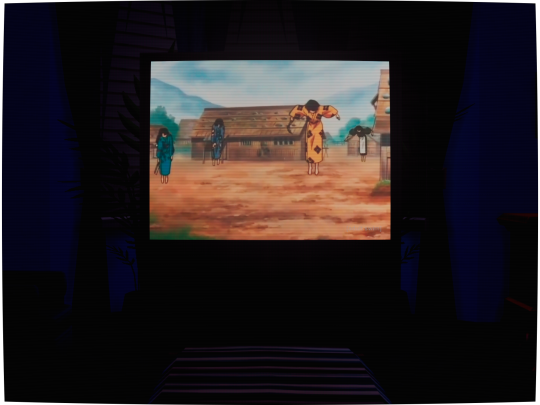
My experience with the show, Inuyasha It’s 2002, and I’m in someone else’s house trying to get some shut-eye with the only illumination being a TV I’m watching from a sofa-bed when an episode of some new series comes on where bodies are rising with the body language of holding a puppet in the air by its strings. Turns out they’re being marionette’d by HAIR, and they’ll come right at you with knives! Of course I fall asleep and dream about this situation but have no idea what I saw. There’s a mystique to television with no guide, no rewind feature, no history, or recommended finding the right thing for you. Just pure, random art that you may never see again. You could spend the rest of your life wondering. In this case, I had a hunch about that art style and got the name off the girl at school who had all the anime VHSs, but instead of risking her trading me a cursed tape, I filed its name in my head and put it off until I stopped watching shows as a whole, with it keeping the mystique of being some horror thing I saw in the middle of the night and remembered for almost 25 years. I’ve occasionally thought about this scene where someone looks down a well at the remains of a centipede-human monster, once faced. Now it’s time to finally find out what it was.

犬夜叉 〜かごめの戦国日記 (Inuyasha: Kagome’s Sengoku Diary) – 2001 – WonderSwan Color The Inuyasha show was by Bandai’s film company, called Sunrise at the time, and across its initial run was a trilogy of games for their new WonderSwan Color that take you through the show’s story. The premise is that a modern middle schooler stumbles upon an ancient, monster-filled world through a well by her house. There she finds the demon, Inuyasha, who her ancestor once bested, sealed away. She has the power to subjugate this demon to combat the horrors of this new world, like the centipede-human, who has such a fun design. I’d describe the combat as Pokemon-light, where it’s turn-based with a menu for you to bark at the demon to attack, block, dodge, or use his own judgment with a whole temperament system, as combat really isn’t the main meat of this game. It seems first and foremost to be a teen girl romance novel, which I was not expecting! I did begin to suspect it when looking at the pink, frilly manual and commercials for the games. Now, you’re not trapped in the past. You can go back and forth to the present whenever you want (though so can other things) to access your diary and ask your mom for snacks, but your protagonist, Kagome, will be too nervous to ask for more than one snack per return to her house, commenting her mom might get mad. Meanwhile, in the past, you have Inuyasha, the dog boy, to build a relationship with and adventure alongside your fantasy friend group into a world of classic mythological horror. I can easily see the appeal of what's essentially an episodic visual novel, with how much of the game is just text boxes with people standing around, but also mini-games you can access whenever you want on the go and maybe even a little farming if you find an exploit to Mom giving you snacks like I did. This game is easy to digest and carried on the back of its setting’s aesthetic, but I think its moment-to-moment writing, audio, and visual design sell its source material short. I’m not recommending they try to recreate every camera angle of the scenes with Mode 7-esque graphics because that’s a lot of sprites, but a Ring ∞ wouldn't need to always show to paint a scene's picture, and its audio design had the restraint this game sometimes lacks. Sometimes I worry that people are seeing the sprites of a game instead of them being building blocks for your imagination to complete, and a lot of that can be on the game designers. Player agency isn’t just part of gameplay but visual design and writing. At the beginning of the game, they were able to keep up with showing a variety of imagery, but overall I notice this game’s scenes neither show NOR TELL. There’s a general lack of scene setting and flavor text to guide one’s imagination into seeing anything other than the characters in idol poses reciting dialogue. Even if you’ve seen the show to remember what the scenes look like, this can’t be a particularly satisfying recreation of these moments to relive. This is an overall fine game but with a valuable lesson to learn from.

Dark Arms: Beast Buster 1999 – 1999 Oct 21 – Neo Geo Pocket Color One day, I need to tackle the overall Beast Busters series, but no time soon, and no confusion will be felt not playing the previous 2 when jumping into this dungeon crawler. You are a foreigner to the dark, monster-filled realm and entered a contract with the master who teaches you to steal souls to develop bioweapons with him that you can use in gameplay, and he lets you stay at his house! From there you can venture out into the horror world that I found so interesting to explore! The circus was so inspiring as a horror location, and I felt the dread of approaching its entrance and wondering what it’s going to look like inside the tent. It did not disappoint me with its 2 rooms of pure horror. The game’s story, likewise, gives you a lot of gameplay in between to think about it as it slowly unfolds, feeling like a reward for that gameplay. It’s complemented by the contextualization of you living in a house where your bed, bio-weapon toolshed, and roommate to talk to and build your arsenal with are. You adventuring into the world from this save room achieves a feeling that you’re exploring out into a changing world thanks to the way it directs how you interact with its levels, including day and night, affecting what lurks about. Bravo on this horror game!

Handheld Gaming Today As the 21st century rolled around, you might say a duopoly formed for phones when, to survive the iPhone’s rapid success, competitors from Samsung to Sony formed the Open Handset Alliance, all joining under 1 operating system to compete with Apple’s breakthrough in packaging a pocket PC. It was a PC that didn’t let you install programs at first, though, until Apple backing down from the backlash birthed the video game-filled App Store to be preinstalled on future devices with the OHA, having the Google Play Store. With having one of this duopoly's devices becoming an expectation of all first-world humans, their preinstalled stores became the most accessible video game marketplaces in history! The number one place people play video games became handhelds! As they say, the more things change, the more they stay the same, as Nintendo’s approach to game design has managed to dominate the marketplace multiple times too. Nintendo’s success upon entering the tablet market is an example of their philosophy of creating with mature technology. Just about every tablet or smartphone is a hybrid. The Sega Nomad and PSP are hybrids, but much like the Game Boy finally broke through with swappable games, the Nintendo Switch finally popularized the decades-old functionality of handhelds to also be home systems. This attracted the massive, untapped audience previous handhelds tried and failed to get. This opened up so many doors, from the Switch-like computers to the Switch-like accessories, as everyone saw the audience the Switch won over and stepped up their game to compete! This is as healthy as a market can be, sharpening each other like fine blades! Handhelds being bigger than they ever were in the 20th century has given us new, bigger handheld horror games than ever before… but let’s not forget the lessons learned from our past.
#retro games#horror games#youtube#horror#arcade#20th century#game boy#game gear#atari lynx#game & watch#gbc#gameboy color#bandai#epoch#virtual boy#virtual reality#pc engine#tiger electronics#dreamcast#ps1#sega#apple arcade#android#nintendo switch#dracula#Youtube
2 notes
·
View notes
Photo

Metal Slug 🏢 Nazca Corporation 📅 1996 🖥 Android, Game Boy Advance, Linux, Mac, Neo Geo AES, Neo Geo CD, Neo Geo MVS, PS1, PS3, PS4... #videogames
#Android#Game Boy Advance#Linux#Mac#Neo Geo AES#Neo Geo CD#Neo Geo MVS#PS1#PS3#PS4#PSP#Saturn#Switch#Wii#Windows#Xbox One#iOS
4 notes
·
View notes
Text

This was the coolest mobile phone ever to exist... and my first own smart phone. Had a great time playing Crash and other PS1 games on this ultimate #gamer device.
#sony#xperia#play#games#ps1#ps1 aesthetic#psp#pspgo#phone#mobile phone#smartphone#touch#android#english#german#game
2 notes
·
View notes
Text
4 notes
·
View notes
Note
is the retroid pocket a good investment? i saw your tags and am curious! :]

i'm probably biased bc i'm so used to buying retroid but yea. it's slightly pricier than some other options you might find due to the price creep of the gradually upgrading chipsets but its definitely worthwhile from my perspective, as someone who likes retro emulation and android gaming. all retroids have bluetooth support to connect extra controllers, headphone jack for audio, sd card slot to load up games from, wifi for downloading more games, and display out options to connect to a tv or somethin! you gotta bring your own games unfortunately, but it does come built in with some emulation apps to install during setup, and a choice between using the standard android OS, or the custom Retroid branded Launcher to launch games from! generally i use my retroid to play PS1, PSP, PS2 and GBA games, although im pretty sure it can handle N64, Dreamcast, NDS and 3DS too. basically if there's an android emulator or RetroArch core for it, the Retroid can probably handle it, YMMV.
the most recent model line, the Retroid Pocket 5/Mini, is still available on the GoRetroid website. generally if you're buying a retro handheld then make sure you buy it directly from the original site/source so you don't get ripped off by some offbrand seller trying to pawn one of those 100-in-1 knock off consoles on you.
time for an autistic ramble about my collection since i love these devices so much...

the original retroid pocket 2! this was the first device that caught my eye and my gateway drug into retro emulation handhelds, as it only cost $80 back in 2020. there were pink, yellow and cyan colorways too, but indigo was the most popular option :P it was a little awkward, what with the switch style analog sticks not having R3 functionality and only having one gig of RAM, but it got the job done. it also had micro HDMI out to connect to a display, kind of a hassle since micro HDMI isn't too common, but they used to sell micro HDMI cords on their site along with other accessories (screen protectors, grips, cases, etc...)

the retroid pocket 2+ was an upgraded model released a year later for $90, with 2GB RAM and a touchscreen added. still no clickable analog sticks but oh well! i bought the PS2 style colorway, a lot of their colors are styled after other retro consoles. the 4:3 screen was kinda cute! difficult for playing PSP games since it letterboxes the screen, plus you have to do some extra tweaking in the emulator settings to get it to work properly...

less than a year later, they made the Retroid Pocket 3! this one signalled a change in their release system in many ways, most notably the fact that now every retroid model comes in 2 versions: a cheaper model (with less storage/RAM) and a premium model (with more storage/RAM). personally i've never had any reason to go with the cheaper model, especially since the power difference can be so vast between the two sometimes, so every model i have is the premium model. this one cost $130, which is quite the price jump, but the added quality made it worth it for me :) the RP3 was Retroid's first foray into a 16:9 device, great for playing PSP/NDS, and easy to work with the 3GB RAM. any 4:3 games will have letterboxing on the sides now (unless you have a widescreen hack or something) but i never minded that much. also, this is the first Retroid model with R3 functionality on the joysticks! it might not matter much to most people, but i really wanted to play Ape Escape on the go :3

at some point GoRetroid realized the Retroid line kinda peaked with the RP2 form factor, so they brought it back with some added improvements for those looking for an updated 4:3 handheld, now now known as the Retroid Pocket 2S. idk what the S stands for! its looks pretty similar to the regular RP2, but with clickable hall effect joysticks on the bottom, a PSVita style DPad, and up to 4 GB of RAM. i loved this one! for a while i used to switch between the RP2S and the RP3, depending on if i was in the mood for PS1 or PSP gaming. the black crystal shell was also neat, i love clear electronics :3 price went to $120, more expensive than the original RP2 line but cheaper than the RP3. worth the price, considering the QoL improvements they made over the original RP2!

then there's the Retroid Pocket 4, released around the same time as the RP2S. this model has the same shell as the RP3 for those looking for a 16:9 form factor, while retaining the improvements from the RP2S (hall effect joysticks <3). this device is currently my go-to for portable retro emulation, with 8GB RAM and android 13 compatibility. this one can play some lighter PS2 games, but i mostly use it to play balatro these days. also, convenient feature; since the Retroid Pocket series is just an android with a built in controller, any android games with controller compatibility can be played with the Retroid controls. theres also a gamepad mapper to map button controls to other android games that don't have built in controller support, but i've never used it so i can't vouch for it -_- the RP4Pro was $200 on release, yowch! still definitely a worthwhile investment, but a far cry ffrom the original price tag of $80 back in 2020... there's still some discounted models of RP4 on sale on their website, although there's not many left, as GoRetroid is mostly clearing space for their newest model...

...the Retroid pocket 5! this model signifies another shift in Retroid's design, as they've shifted to a PSVita looking model with the rounded features and glass front panel. i got the gamecube colorway since i really liked the vibes it has... aesthetically this is the best Retroid Pocket model yet. the 3d hall sticks also have RGB LEDs built in than can be customized from a built in app, and an OLED screen that looks especially gorgeous on the black RP5 model, as the bezel screen blends right into the rest of the glass face. this one is their priciest model yet, clocking in at $200 for the RPmini and $220 for the RP5. this model also removed the micro HDMI port in favor of a display out USB-C port like how the nintendo switch does. they also released an official dock with HDMI and ethernet ports to go along with it! i haven't switched over to the new model yet since its still 8GB RAM like the RP4Pro and it'll probably take a while to move some of my android apps over, but i've heard good things about this model! it's also linux compatible from what i've heard (ROCKNIX, Batocera) but once again I Haven't Tried Those Yet
but yea that's my collection! Retroid has served me pretty well over the years, i give it the Saint Lesbian Seal of Approval
#pentababbles#retro gaming#retro handhelds#retroid#retroid pocket 5#retroid pocket 2#retroid pocket 3#retroid pocket 4#You've Activated My Autism#right now im really looking forward to the Retroid Pocket Flip 2...#previously GoRetroid released the Retroid Pocket Flip back in 2023 but i skipped it since i didn't like the analog sliders...#i want a clamshell style handheld with at least enough power for psp games.#plus this new model is going to have a lanyard hole for extra portability...#i'll probably end up using the RPFlip2 as a fancy music player or something for convenience lol#i love retro handhelds. i love having the power of the original playstation on the go. three cheers for technology
9 notes
·
View notes
Text
Alright I'm tired of it being locked up in a notepad, here's the chronological release dates of all things Destiny that I know of. I'll add to it if someone knows more.
Dates are YYYY/MM/DD. Blue is Destiny 1, pink is Destiny 2, pretty much just prefix everything with the normal full title of either game. I'm trying to keep it easy to read. Kasukabe's artbook is on here because it has extra comics. The anthologies are non-canon but officially licensed and all by multiple artists (far too many to list) as far as I know. I am not dedicated enough to find the localization dates of everything, just know that various things have received localizations in languages other than English, sometimes several years after their initial publication.
1997/12/23 - Tales of Destiny PS1 release 1997/12/25 ~ 2000/10/30 - 神の眼をめぐる野望 (first manga adaptation by Shinki Kitsutsuki) 1998/03/01 - ルーティのルール (novel by Ryuuji Saiki) 1998/09/01 - 青の記憶 (novel by Sara Yajima) 1998/09/10 - 天地戦争編 (novel by Ryuuji Saiki) 1998/10/23 ~ 1999/01/23 - First half of drama CD 1999/04/24 ~ 1999/06/26 - Doujin drama CD (by Tomokazu Seki (Stahn's voice actor) and Yuka Imai (Rutee's voice actor)) [???] 1999/06/10 ~ 1999/08/28 - Second half of drama CD 1999/12/28 - Mini Drama CD 2000/05/31 - 運命をつぐもの (novels by Sara Yajima) 2000/07/18 ~ 2003/01/18 - Second manga adaptation by Iqura Sugimoto 2000/07/27 ~ 2001/09/27 - Super Comic Gekijou (Anthology) 2000/08/25 ~ 2002/01/31 - Broth Comics Anthology (Anthology) 2001/01/19 ~ 2001/10/19 - 4koma Manga Gekijou (Anthology) 2002/09/28 - Tales Ring Archive drama CDs 2002/01/31 - Tales of Fandom vol.1 2002/11/29 - Tales of Destiny 2 PS2 release 2003/01/01 ~ 2003/03/25 - Novels by Shou Yuuki 2003/02/21 ~ 2004/10/29 - 4koma Manga Gekijou (Anthology) 2003/03/01 ~ 2003/11/24 - 蒼黒の追憶 (novels by Sara Yajima) 2003/03/10 ~ 2004/08/27 - Super Comic Gekijou (Anthology) 2003/04/26 ~ 2003/08/22 - Drama CD 2003/05/17 ~ 2006/03/18 - Tales of Destiny 2 manga adaptation by Makoto2Gou 2003/06/25 - DNA Media Comics Anthology (Anthology) 2003/08/01 ~ 2003/01/01 - Broth Comics EX Anthology (Anthology) 2003/08/25 - DNA Media Comics / ID Comics 4koma Kings (Anthology) 2003/09/01 - 朱鷺色の風 (novel by Sara Yajima) 2006/11/30 - Tales of Destiny PS2 remake 2007/02/16 - Tales of Destiny 2 PSP port 2007/03/01 ~ 2007/05/30 - 蒼黒の想い (novels by Sara Yajima) 2007/03/22 - Gangan Comics Anthology EX (Anthology) 2007/04/10 - BLADE Comics Anthology Collection (Anthology) 2007/12/27 ~ 2011/02/26 - 儚き刻のリオン (DC manga adaptation by Akira Kasukabe) 2008/01/31 - Tales of Destiny Director's Cut release 2011/07/13 - Akira Kasukabe's Tales of Destiny artbook 2013/11/18 - Pachislot........ 2014/02/04 - Pachislot Android/iOS port 2021/11/19 - Tales of Reading Live
By the way, anyone know if the android/iOS port of the pachislot was ever archived?
12 notes
·
View notes
Text
The song is 'Luna's Boat Song - Wind's Nocturne' from the game 'Lunar: Silver Star Story Complete', a 1996 JRPG developed by Game Arts and published by Entertainment Software Publishing. Released on Sega Saturn / PS1 / Windows / iOS / Android and upcoming release on Switch / PS4 / PS5 / XboxOne / Xbox Series X and S
youtube
7 notes
·
View notes
Text
Welcome to the world of Ridge Racer!
Ridge Racer, the home of drift racing... Alternate link: https://ridgeracerpictures.tumblr.com/ Also available on Bluesky! https://ridgeracerpictures.bsky.social
This blog catalogues a personal collection of screenshots from titles within the Ridge Racer series. New post is published every 13:30 UTC, and will be tagged with #daily ridge racer picture!
"There's more to the series than just R4..."
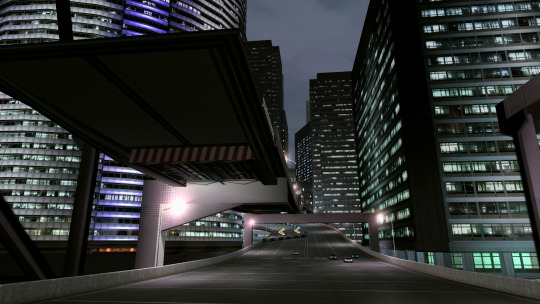
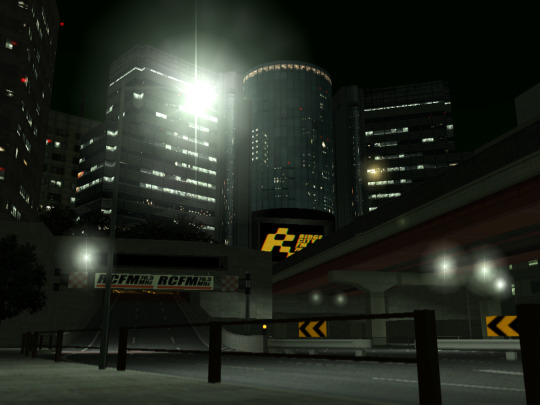

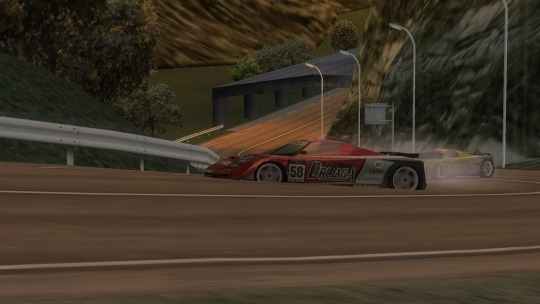
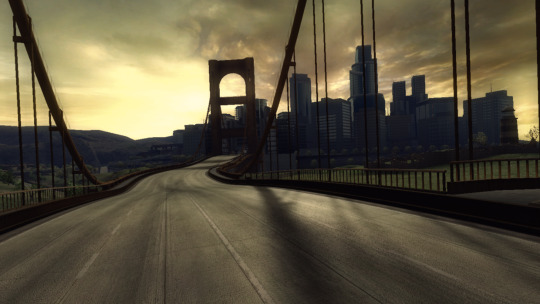
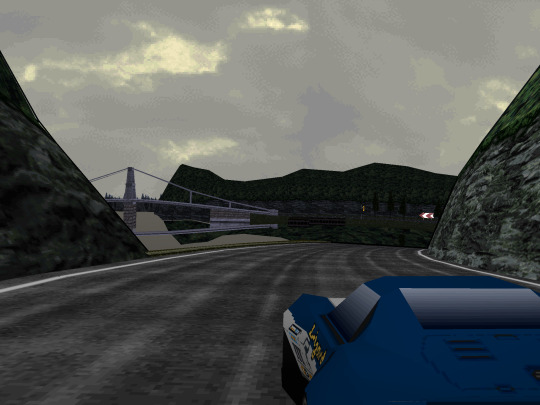
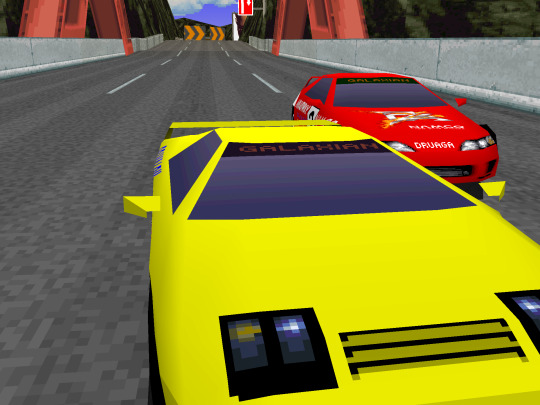
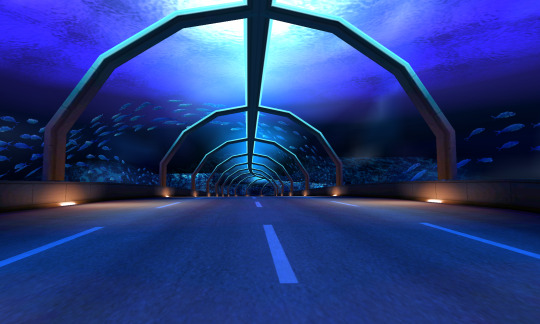
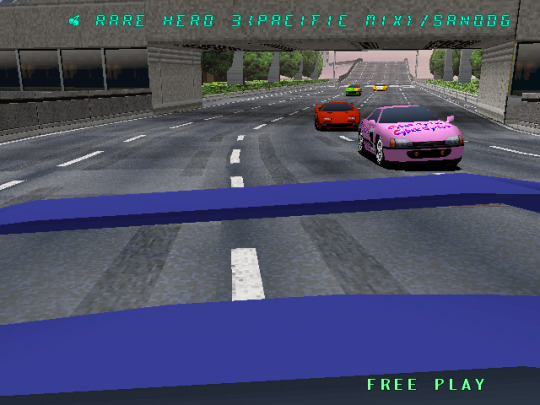
Last edit: 22nd April 2025 06:11 -- Edited the Featured entries section to have Ridge Racer Unbounded
Content tags
Notable content types featured in posts are shown below:
#race replay: The most common type of posts; represents replays of races which put focus on either the course sceneries, or the racing machines.
#course preview: Represents pre-race course previews, which have been an element since R4 / Ridge Racer Type 4.
#ui design (a.k.a. Design Language): Represents user interface and HUD designs of target Ridge Racer titles.
#machine intro: Represents snapshots of cinematic machine unlock sequences.
Featured entries
Here are the games that the blog has covered with the respective tags:
Ridge Racer (Arcade, 1993) #ridge racer arcade
Ridge Racer (PlayStation 1, 1994) #ridge racer ps1
Ridge Racer 2 (Arcade, 1994) #ridge racer 2
Rave Racer (Arcade, 1995) #rave racer
Ridge Racer Revolution (PlayStation 1, 1995) #ridge racer revolution
Rage Racer (PlayStation 1, 1996) #rage racer
Pocket Racer (Arcade, 1996) #pocket racer
R4 / Ridge Racer Type 4 (PlayStation 1, 1998) #ridge racer type 4
Ridge Racer 64 (Nintendo 64, 2000) #ridge racer 64
Ridge Racer V (PlayStation 2, 2000) #ridge racer v
Ridge Racers (PlayStation Portable, 2004) #ridge racers
Ridge Racer 6 (Xbox 360, 2005) #ridge racer 6
Ridge Racers 2 (PlayStation Portable, 2006) #ridge racers 2
Ridge Racer 7 (PlayStation 3, 2006) #ridge racer 7
Ridge Racer Accelerated (iOS, 2009) #ridge racer accelerated
Ridge Racer 3D (Nintendo 3DS, 2011) #ridge racer 3d
Ridge Racer (PlayStation Vita, 2011) #ridge racer vita
Ridge Racer Unbounded (Windows, PlayStation 3, Xbox 360, 2012) #ridge racer unbounded
Note for Ridge Racers and Ridge Racers 2: All contents shown that are not exclusive to either game will use both games' tags; any content shown that's exclusive to either of them (i.e. machines, courses) will have its tags limited to that game.
Here are the games that the blog has not covered (no ETA for when they will be featured):
R: Racing Revolution (PlayStation 2, 2003)
Ridge Racer DS (Nintendo DS, 2004)
This blog will NOT cover:
Critical Velocity (PlayStation 2, 2005)
Ridge Racer Drift (J2ME, 2010)
Ridge Racer Slipstream (iOS, Android, 2013)
Ridge Racer Draw & Drift (iOS, Android, 2016)
Any other obscure ports/entries
Most pictures are taken using emulators for enhanced image output.
2 notes
·
View notes
Text
youtube
In our final episode we defeat the final boss, have technical difficulties, meet Sadler one last time, reach our ship, and earn our ending.
SIGNALIS is a survival horror game inspired by the old PS1 classics. In it we play as Replika unit LSTR-512 exploring a ruined facility and battling infected androids in a quest to find their lost lover. Along the way things get goopy and a little bit of Lovecraft happens as we learn to schlow and try to function as a robutt.
___
Join our Discord server!: https://discord.gg/ZCuEwuEWX3
New lets play videos daily!: https://www.youtube.com/c/BasicKabyl
___
#gaming#gameplay#lets play#playthrough#walkthrough#guide#youtube#video#basic kabyl#signalis#survival horror#androids#Youtube
5 notes
·
View notes
Text
Signalis
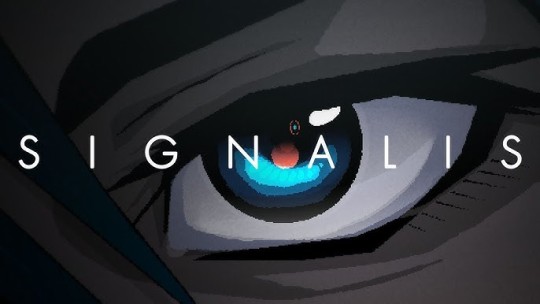
Playtime: 8h50m Completed: October 27, 2023
My initial impression of Signalis was...mixed.
Its classic survival horror PS1 aesthetic was exquisite in its presentation. The UI and blocky character models were all spot on, retaining the chonkiness of CRT-era games of yore while making the whole package just more accessible and smoother to play. The lighting in particular is masterful, bringing bloodstained hallways and derelict spaceships to new horrifying light in ways original hardware couldn't.

All the pieces of a survival horror classic were there, which is why the game frustrated me with its neverending references to other horror titles. The rugs in The Shining making a few appearances. Direct dialogue from Silent Hill 3 was injected into the game that served no purpose other than to be a reference. Some sound effects come right from Alien. The game can be anchored down by being a homage to everything that came before it.
I suppose this had a purpose. Like the mangled memories of the anime androids we were unearthing, these references are made to reflect the memories of the players back at them, intentionally invoking a feeling of "wait...have I been here before?" I'm sure there's no shortage of spilled ink about these references and the games overarching themes of cycles and memory, but I had very little interest in that dead-end commentary as I was playing the game.
Instead, when the game does attempt to make something new, it almost always succeeds. The radio-based puzzles were fresh and unnerving, and the handful of boss encounters are clearly well thought out. The presentation, which almost too often had an air of unearned pretentiousness, still manages to make the game stand out and resulted in a few chilling sequences.
When I think back on the game after it's distilled in my mind, those unique moments are what float to the top. Signalis is overall great, certainly one of the best survival horror games of the last few years. I just wished that it pulled more on its own unique style instead of being stuck in the past.
Also it made me lose it every time the game would cut from gorgeously rendered 3D scenes like this:

To C-tier anime art like this:

Just took me right out of the game...
11 notes
·
View notes
Text
Just beat Chrono Trigger for the first time.
Much like with Final Fantasy VII, it’s very easy for me to see why this game is considered so beloved by retro RPG players. This is definitely one of the most interesting games I’ve played from the SNES era. However, again much like FFVII, it’s a game that really struggled to keep its hooks in me.
As far as the story goes, there were maybe 3 characters out of the 7 party members I actually felt engaged by. Ayla’s a goofy cavewoman who attacks like a wild animal AND steals items by charming her enemies AND heals with kisses, very fun. Frog is more of a driven protagonist than Crono, having an actual goal and actual dialogue, I just loved having him around because of how kind and chivalrous he was. And then there’s Robo, who is just Android 16 and that’s awesome. Everyone else in the cast is just kinda there.
The gameplay is potentially interesting, but by the time you recruit every character you’ve seen everything the game has to offer, and the restrictive nature of the story and how the characters grow mechanically and narratively leaves almost no room for experimentation or fleshed out side content.
It’s a fine game. But only just fine. I’d probably sooner play any of the PS1 or SNES Final Fantasies again before I came back to Chrono Trigger.
3 notes
·
View notes
Photo

R-Type II 🏢 Irem 📅 1989 🖥 Amiga, Android, Arcade, Atari ST, Game Boy, PS1, iOS #videogames
7 notes
·
View notes
Note
Can you list your favourite videogames that have magical girls? I would love to have some cool videogame recommendations
YouTube Channel Cuarto Freaky AFK has 8 videos about Magical Girl games! Here's Part 1 to get you started:
youtube
But, here are my all-time favorites:
Purikura Daisakusen* (Arcade, SEGA Saturn);
Magical Pop'n (SNES/Super Famicom);
Twinkle Star Sprites (Arcade, SEGA Saturn);
Mystic Riders (Arcade);
Pu.Li.Ru.La (Arcade, PS1);
Bishoujo Senshi Sailor Moon (Mega Drive);
Magical Chase (PC Engine, GBC);
Magical Girl Critical (Android app);
Fushigi no Yume no Alice (PC Engine);
Cotton series (various consoles/platforms);
PuyoPuyo series** (various consoles/platforms).
*This one is a spinoff of ATLUS' fighting game Power Instinct Matrimelee, protagonized by one of its playable characters, Hananokoji Clara.
**I enjoy both Compile and Sonic Team versions, though I like Sonic Team's aesthetics/visuals more!
2 notes
·
View notes
Note
May I know what is Lunar Week?
And do OCs need to be related to your fandom interest or OCs without fandom is acceptable for you? thanks for your time answering this ask :)
Lunar Week is a multi-webplatform event where fans of the Lunar jrpg series (Lunar: The Silver Star [sega cd]; Lunar 2: Eternal Blue [sega cd]; Lunar: Walking School [sega gamegear]; Lunar: Silver Star Story Complete [saturn/ps1]; Lunar 2: Eternal Blue Complete [saturn/ps1]; Lunar: Magic School [saturn]; Lunar Legend [gba]; Lunar: Dragon Song [nds]; Lunar: Silver Star Harmony [psp] and Lunar: Touch [android/iphone]) celebrate their love for the games by making Lunar stuff and sharing it with the world! Sometimes we have a prompt-list, sometimes we don't. Depends on how burnt out the event coordinator is feeling! And somehow I've adopted the position of event coordinator for the past couple years haha.
And yes, any OCs submitted for sketch requests must be Lunar OCs.
This is a Lunar-themed blog, in case you didn't realize. ;)
2 notes
·
View notes
Text
Price: [price_with_discount] (as of [price_update_date] - Details) [ad_1] ⚡Professional Power + USB On the Go (OTG) is compatible with your LG K30for connecting any compatible USB Accessory Device Like Keyboards, Mouse, Gamepads, Drives and More! (Black)✅SPECIFICATIONS:●Unleash the power of your device by giving it access the same USB peripherals that makes your PC easier use!●Works with keyboards, mice, flash drives, game controllers, gamepads, storage drives, encryption devices, almost ANY USB Device that is set for OTG/On-The-Go adaption!●The Long 8 Inch Cable is original standardized guaranteed the best results while making access easier.●Consider getting one for home, office and travel so you’ll always be close a quick charge and full use of whatever device you need to use.●Provide power for USB peripherals so that the battery for your android smart phone or tablet will not be drained so quickly like others ordinary OTG cable. Note:Some updates may make it not possible to use as only a charge, meaning you need to have a USB Device added to also charge your device.✅ENHANCEMENTS:●The Tek Styz™ OTG adapter gives Works for your host devices an opprtunity add on any USB peripherals such as keyboards, mice, USB Hub, flash drives, external hard drives, USB card readers, game controllers or whatever.●Compatible with TV and Fire Stick, Games, Cyrpto USB Keys, X-box, PS1 PS2 PS3 PS4, PC, Google Chromecast, Android, Raspberry Pi Zero, NES N64 Devices and MORE. Suitable for Android, Windows, IOS, and other systems, no system restrictions.●This can provide both Power and OTG Works for Works for your TV Stick, PlayStation Classic, Google Chromecast, Raspberry Pi Zero, NES N64 Nintendo Devices and many other streaming media player which powered by Micro USB charging cable. ✅POWER + DEVICE SYNC: Power your device while using hundreds of accessories like keyboards, mice, flash drives, game controllers, gamepads, storage drives, encryption devices, and more! (Only Charges One Item, not Two) ✅EXPAND LIKE CRAZY: With the On The Go Standards/Protocols you can expand to any device you wish, have at it, EXPAND your use like a Computer or Mac does! ✅PLUG and PLAY: Simply connect the Micro USB male port to your host devices and the micro USB female port to your usb power cable, then it is ready to go. Set it up in minutes without any extra effort or configuration. ✅FULL CHARGING: Whatever charger you plus in, up to 5 amps will transfer to your device and charge. ✅EXPERT MODE ADVICE: Once you verified your device works with others, you may have to enable OTG or USB Mode in your USB Settings. Try restarting while this cable and the accessory are plugged in. Or Edit USB FUnctions to OTG or USB Mode. Some default to only charge, you must change this. [ad_2]
0 notes
Text
#Gamefemerides
Hace 24 años fue lanzado Mega Man X5. Es un juego desarrollado y publicado por Capcom. Es la 5ta de la serie Mega Man X. Fue lanzado originalmente en PlayStation.
Mega Man X5 sucede en siglo XXII en un mundo donde los humanos coexisten con androides humanoides llamados Reploids. La vida diaria está bajo amenaza constante por Reploids que se han vuelto Mavericks, y participan en crímenes peligrosos y letales. Después de los eventos de Mega Man X4, el líder Maverick, Sigma, ha sido revivido y busca liberar el verdadero poder del Maverick Hunter Zero, y destruir al héroe X.
#LegionGamerRD #ElGamingnosune #Gaming #RetroGaming #RetroGamer #CulturaGaming #CulturaGamer #GamingHistory #HistoriaGaming #GamerDominicano #GamingPodcast #Capcom #MegaMan #MegaManX #MegaManX5 #PlayStation #PlayStation1 #PS1 #PS2 #PS3 #PSVita #Nintendo #GCN #NintendoSwitch #Xbox #XboxOne #Accion #Plataformas
instagram
0 notes